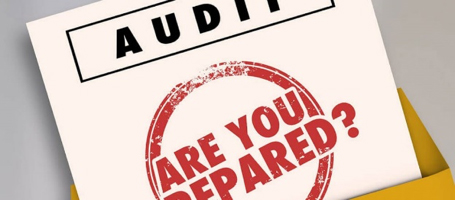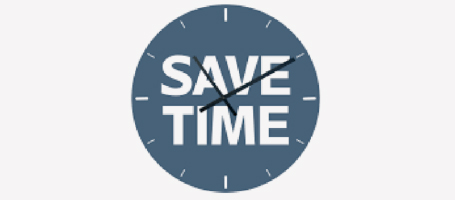Qualification & Validation
Paperless Validation – The Future of Validation
Business processes in Industry are largely paperless with SAP being a common solution for large operations with modules available for finance, HR, Asset management etc. Specialised software are also available to manage laboratories in a paperless manner and to manage quality systems (change control, deviations, CAPAs etc.).
With the world becoming digital, even my doctor has become digital. COVID-19 pandemic has encouraged contactless activities thus moving towards digitalization.
Commissioning, Qualification and Validation (CQV) in many companies is still managed by following SOPs and hard pre/post approval signatures on documents with multiple initials/dates on documents as they are implemented. Process flows are often defined in the SOPs but in many cases modifications to the SOPs due to CAPAs, and audit findings have made the flows overly complex.
The result is a qualified system, but a lot of time spent checking documents are complete, locating documents, verifying every document is approved. Then 3 years later in an audit trying to locate the correct document/test and explaining why the test script differed between protocols. No one would accept this in a large financial system so why do we accept it for CQV?
For this discussion, we are talking about full paperless validation of the entire GxP validation document lifecycle, and not a simple electronic approval of documents which are then manually implemented.
Paperless Validation in practice what do we need, what is the impact and is it realistic:
- Process flows which must be followed
- Standardised formats for all documents
- Standardized test cases, with pre-populated templates per test case
- Flexibility for custom built document template for any specific requirement
- Automated linking of requirements through C&Q test cases in an RTM.
- Electronic approval of documents pre and post, with electronic commenting features and version control
- Tablets or laptops in the field which are used to record data with e signatures
- Automated generation of trace matrices, lists deviations (open and closed) and outstanding issues (open)
- All documents searchable
- Allows ownership of documents to be easily transferred with a few clicks.
- Long term readability of documents (25 years)
Based on the above, paperless validation is much more than just executing Validation in the field with tablets. If setup initially and correctly on a large C&Q project, all of the initial documents (i.e., VP, URS, Risk Assessments, GxP Design Documents) can be developed in a paperless validation software by the client, client’s CQV agent, and clients design consultants (i.e., A/E firms, automation firms, and equipment vendors). With many paperless validation vendors, if a client or CQV agent have full training capabilities/certification, then they can actually train A/E firms, vendors, automation firms and can also advance their licenses to those parties, such that all documents are prepared digitally.
Wouldn’t’ it be great to see a project where all parties were working on GxP documents electronically, out of the same system? I.e., the VP, SIA, URS, Risk Assessments, FRS, SDS, HDS, FAT, SAT, IQOQs, etc… were all developed by multiple parties for the same system, electronically, and automatically hyperlinked with an auto-generated RTM.
Paperless Validation does not only have to be applied to new documents developed from scratch, but can also be applied to mature vendors with pre-existing template documents. Such documents can be imported into a paperless validation software “covering” document, where the requirements or test section can be copy/pasted into the covering document to provide full traceability.
Benefits of a paperless approach are:
- Improved Compliance and eliminates inefficiencies
- Saves time and labour, for document preparation, review & approvals, as well as for Document Controls / Paperless document handover.
- Saves space for physical binders / document archival
- The status of documentation is always known
- The correct process flow is always followed
- Standardization of document templates, and test cases
- Automated requirements trace matrices (RTMs)
- Deficiencies, outstanding items, and deviations are visible
- Quality has time to focus on where the correct tests performed was the risk analysis correct
- Documents can be found easily
- More secure than paper documents
- Reduced timelines



Some reasons why paperless C&Q has not been implemented at some companies are:
- Too busy with routine business, to innovate and improve.
- Knowledge of various paperless systems, PROs/CONs of each one, and what to implement?
- Uncertainty of the cost savings of Operations versus Cost to implement (internal, external, and training) and ongoing license costs.
- Efforts require to Validate and maintain Validated state of the application
- Resistance to change, we are used to reviewing documents with multiple initials.
- Resistance to change paperless validation forces us to use standardised processes and test cases.
- Paperless Validation requires having an inhouse set of templates for documentation and test cases, and process flows. Some companies may not have this available.
- Capacity & resourcing to execute the project
The question to ask is do you want to move to a paperless validation system now under your control? Or do you want to move in 5 years time when the FDA or EU inspectors are asking why documents can’t be found, a signature is missing, minor mistakes on a trace matrix etc.
Regulators expect lab data to be managed paperlessly, and in large companies they will expect C&Q data to be paperless.
So, when your company does decide to move forward with a paperless validation system what are the Key things you need to consider, prior to selecting the vendor?
- Is the software 21 CFR Part 11 and EudraLex Volume 4 Annex 11 compliant?
- How many successful implementations does the vendor have?
- Is the application capable of supporting multiple sites?
- Is the system capable of supporting multiple modules?
- Does the system have eSignature capabilities to approve documents?
- Does the system have an electronic test-execution process?
- Is the system capable of auto generating Traceability matrix?
- Is the vendor experience in development of GxP software?
- Does the system have the capability of process reports in real time i.e. document status against project and system owner?
How to plan for a Paperless Validation Roll-out:
- Develop a high lever URS as most of the paperless validation software are pre-validated
- Select the software
- Train Staff on software
- Select the Validation Modules (i.e. CSV, C&Q, CV, PV, etc..) to implement digitally.
- Ensure to have Templates & validation workflow available for the 1st module.
- Implement the 1st Module. Perform COQ Testing (Configuration Operational Qualification) on 1st Module / Site → this is key, as this reduces subsequent testing on further modules / sites.
- Implement additional modules (requires templates & validation process flow for each module)



